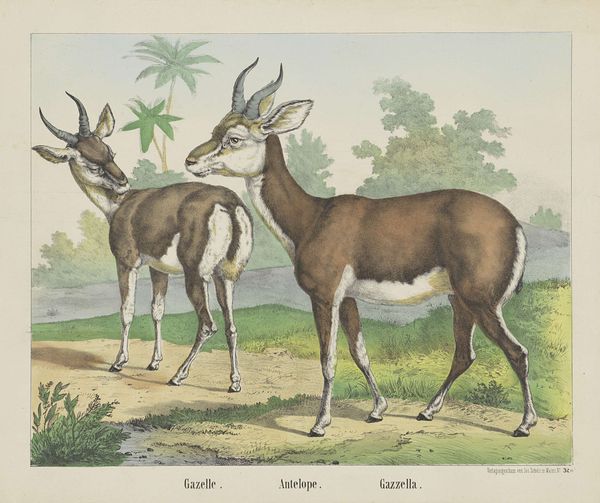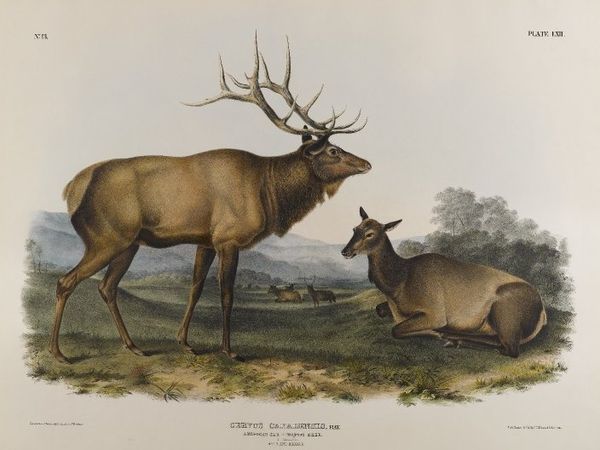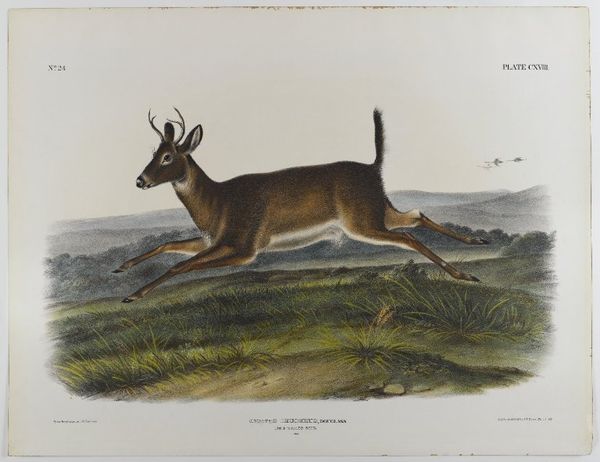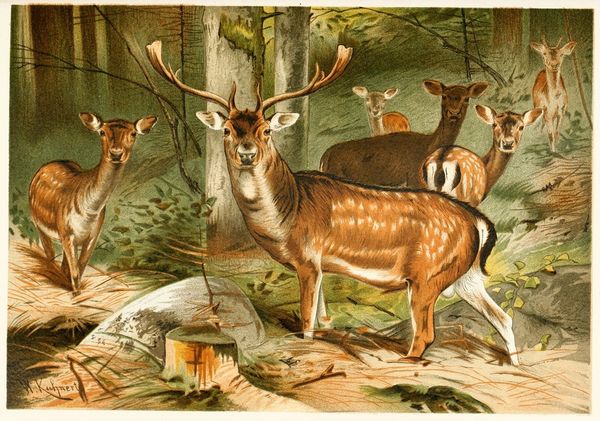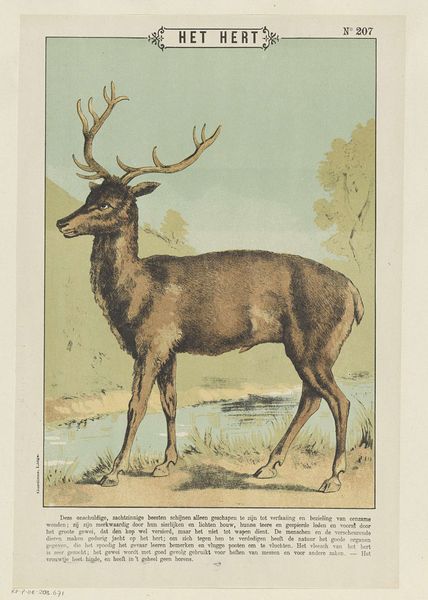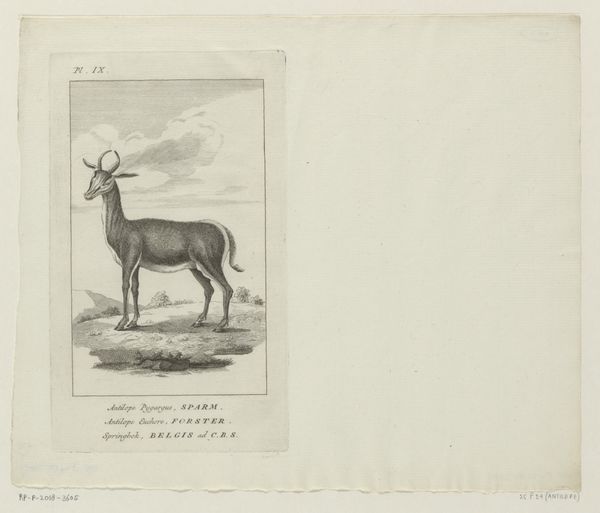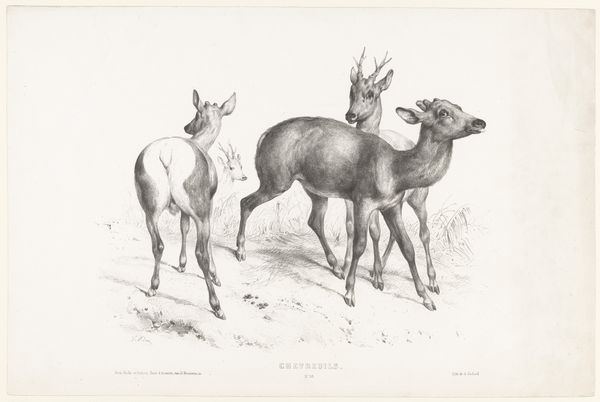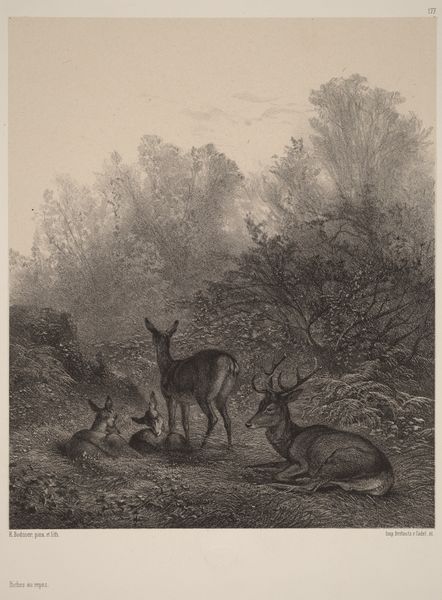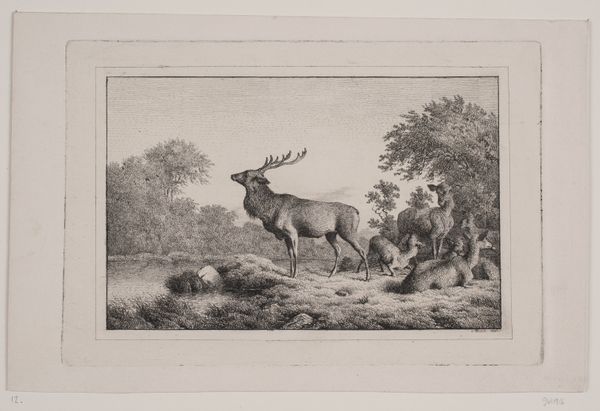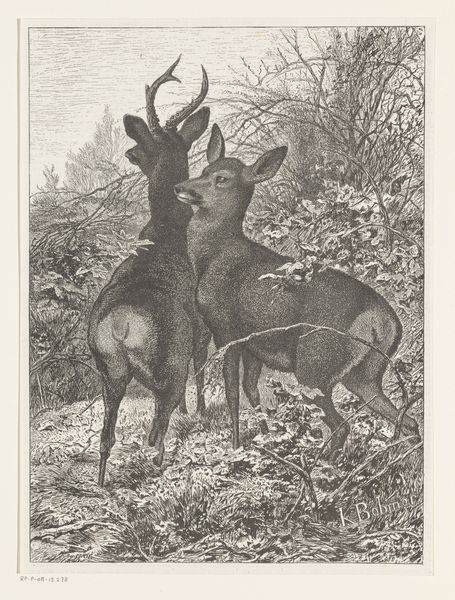
drawing, lithograph, print, paper
#
drawing
#
lithograph
# print
#
paper
#
coloured pencil
#
romanticism
#
united-states
Dimensions: 438 × 620 mm (image); 555 × 707 mm (sheet)
Copyright: Public Domain
John Woodhouse Audubon made this watercolor and graphite drawing of white-tailed deer, Cervus Virginianus, sometime in the mid-19th century. Born in 1812, Audubon was the son of John James Audubon, famous for his detailed illustrations of birds. Like his father, John Woodhouse sought to document the natural history of the American landscape. But what are the politics of imagery in a work like this? This image of deer was created at a time when westward expansion was dramatically changing both the landscape and its animal populations. The deer represented here might function as a symbol of a disappearing wilderness. How might this impact the reception and meaning of this image? As art historians, we must look to a range of resources, including the artist’s biography, historical records, and scientific data to understand the complex cultural meanings embedded in such an image.
Comments
No comments
Be the first to comment and join the conversation on the ultimate creative platform.

